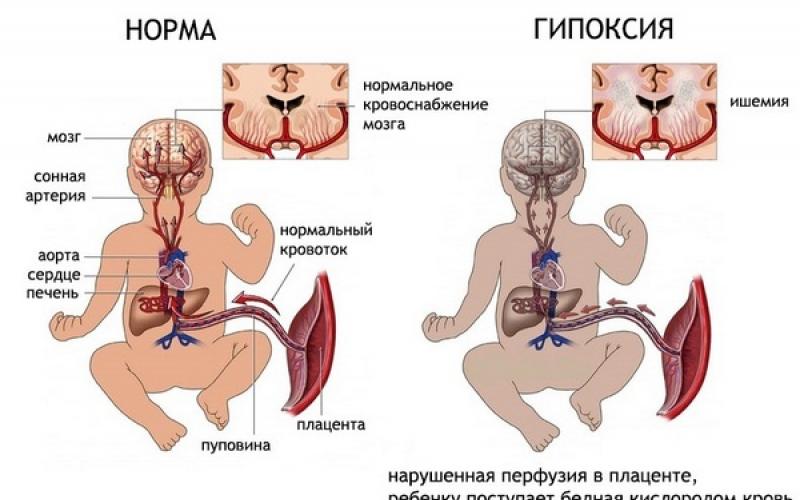Fruits are an essential component of a nursing woman's diet. Fruit variety provides the body with beneficial vitamins, minerals and other nutrients. The issue of introducing exotic fruits into the diet is the subject of numerous discussions, caused by a lack of information about the properties and benefits of tropical fruits. This review will focus on feijoa and its properties.
Feijoa is native to South America. This bush came to Europe only in the 19th century. It ripens in late autumn and early winter, which is especially attractive for a winter diet poor in vitamins. The fruits are collected unripe to avoid damage during transportation.
The fruit contains only 55 kcal per 100 g, so it is actively used in dietetics.
Energy value per 100 g of product:
- squirrels- 1.24 g (5 kcal);
- fats- 0.6 g (7 kcal);
- carbohydrates- 13 g (43 kcal).

The vitamin range of emerald berries is very rich. The most vitamins are contained in ripened fruits. The composition also includes unsaturated fats, unsaturated acids, glucose, amino acids.
The amount of vitamin C in this exotic fruit is close to citrus fruits.
Vitamin C is involved in redox processes and stimulates the absorption of carbon. With its participation, special antibodies are formed that kill pathogenic microbes that enter the body.
The daily norm for a nursing mother is 120-150 mg. Vitamin C is best absorbed together with vitamin PP, which is also included in the composition.
The daily requirement for iodine is 200 mcg.  The microelement composition also includes:
The microelement composition also includes:
- vitamins:
- B1- 0.008 mg;
- B2- 0.032 mg;
- B5- 0.228 mg;
- B6- 0.1 mg;
- B9- 38 mcg;
- C- 32.9 mg;
- PP- 0.289 mg;
- minerals:
- iodine- 40 g;
- magnesium- 9 mg;
- iron- 0.1 mg;
- calcium- 17 mg;
- phosphorus- 20 mg;
- potassium- 172 mg;
- sodium- 3 mg;
- manganese- 0.085 mg;
- copper- 55 mcg;
- zinc- 0.04 mg;
- essential oils.
In terms of iron content, feijoa is close to pomegranate. Iron is involved in energy storage and supplying cells with oxygen.  The mineral is important for metabolism. The norm of iron in the diet during lactation is 30 mg per day.
The mineral is important for metabolism. The norm of iron in the diet during lactation is 30 mg per day.
Did you know? Antioxidants-These are substances that promote accelerated restoration of cells destroyed by free radicals. Antioxidants slow down the aging process, reduce inflammation, and prevent the development of cancer.
The pulp of the fruit contains a lot of pectins. Pectins absorb toxins, while maintaining beneficial intestinal microflora, which has a beneficial effect on the general condition of the body.
Characteristics of feijoa pulp:
- White pulp means that the berry is not yet ripe. These fruits need to sit for a while.
- Creamy pulp- the berry is ripe and can be eaten. The ripe fruit has a dark green skin.
- Darkening brown flesh is a sign of an overripe fruit.. A nursing mother should not eat this berry. Overripe berries can trigger fermentation processes in the intestines.
The complex of vitamins contained in feijoa makes the fruit a good antioxidant.
The peel contains phenols, which are natural antiseptics. They kill germs and improve immunity.  Most fruits, including feijoa, are rich in essential oils, which have a beneficial effect on the body. The fruit contains oils that have a cleansing, strengthening, refreshing and stimulating effect on the body.
Most fruits, including feijoa, are rich in essential oils, which have a beneficial effect on the body. The fruit contains oils that have a cleansing, strengthening, refreshing and stimulating effect on the body.
The cleansing effect of essential oils is manifested in the fact that they prevent the development of pathogenic processes in the body.
Important! One of the reasons for toxicosis and the development of bacteria in the body is the inability of nutrients to penetrate through membranes into the cell. Essential oils have the unique ability to pass through cell walls and deliver nutrients and oxygen to them. This is why people who practice aromatherapy get sick less and recover faster.
Feijoa berries contain a lot of fiber, which promotes proper digestion. Fiber perfectly cleanses the body of harmful substances.
Usually, pregnant and lactating women are advised to eat fruits that grow in the climate zone where the expectant mother lives. And they try not to recommend exotic fruits in order to protect the baby from possible allergens.
But in the case of feijoa, there is no need to worry. Feijoa is successfully grown in the Caucasus, Crimea and Krasnodar region. Feijoa berries contain iodine in an easily digestible form.  This iodine reaches the baby more easily, which is especially useful during the period of development of the baby’s thyroid gland.
This iodine reaches the baby more easily, which is especially useful during the period of development of the baby’s thyroid gland.
During lactation, feijoa is useful precisely as a source of vitamin C. It is also indispensable for women who are allergic to citrus fruits.
Possible harm
Feijoa fruits contain a large amount of sugar. For this reason, the berry should not be consumed if you have diabetes. A large amount of iodine makes these berries undesirable in the diet of women with hyperthyroidism (thyrotoxicosis).
If a young woman is prone to allergic reactions, then before consuming feijoa, like other exotic fruits, a doctor’s consultation is necessary.
Important! Any fruits and berries should be eaten in moderation! No more than 3 pieces per day. Overeating can lead to stomach upset. In addition, feijoa contains a large amount of iodine. Excess iodine increases the excitability of the nervous system.
When is it possible after childbirth?
During the first 3 months of breastfeeding, women are advised to abstain from all fruits that could at least hypothetically cause an allergy. During the first 6 months of the baby's life, the mother also needs to carefully choose her diet.
When introducing a new fruit into your diet, start with a small dose and at the same time monitor both your body’s reaction and the baby’s reaction.
In the absence of allergic reactions, you can eat the fruit at any time raw, in compotes and desserts.
Cut the berry in half along the midline and eat the pulp with a teaspoon.  It is advisable to start introducing a new fruit into the diet of a nursing mother with 0.5 berries.
It is advisable to start introducing a new fruit into the diet of a nursing mother with 0.5 berries.
Despite the fact that the peel is also considered healthy, it is recommended to introduce the berry without the peel into the diet, and only if there is no negative reaction from the body can you try the berry with the peel.
Did you know? The peel of the berry is useful (cancer prevention), but has an astringent and tart taste. Therefore, it is dried and brewed as tea.
Eat about 3 fruits a day, but preferably no more than 100 g. This rule is due to the fact that the body needs a complete and varied diet.
Therefore, it is wrong to focus on only one type of fruit or vegetable. 
What other exotic fruits can nursing mothers eat?
At different stages of baby development, a nursing mother is recommended to consume:
- 1 month- banana, peach, nectarine. These fruits do not contain allergens;
- 2 months- figs, persimmons, apricots are added to the first group;
- 3 months- you can gradually introduce red fruits and berries into your diet;
- from 6 months When the baby begins complementary feeding, the mother can introduce all available fruits or berries into her diet, provided there is no allergic reaction to them.
Possible allergens include:
- All red-fruited fruits or berries;
- citrus(oranges, grapefruits, lemons, tangerines);
- Exotic fruits, not growing in the area where the nursing mother lives.
If your body is not predisposed to allergies, then you can introduce a new type of fruit into your diet once every 2-3 days. This is due to the need to monitor the baby’s reaction to changes in the composition of breast milk. You cannot administer two products at the same time.  The benefits of eating feijoa are obvious. Having carefully studied the microelement composition and beneficial properties of the berry, a nursing mother can include feijoa in her daily menu. But remember, the body’s reaction to fruits is individual.
The benefits of eating feijoa are obvious. Having carefully studied the microelement composition and beneficial properties of the berry, a nursing mother can include feijoa in her daily menu. But remember, the body’s reaction to fruits is individual.
It's a joy to be a mom! And for a nursing mother - indescribable happiness! Each of us decides for herself how long she will feed the baby. Some breastfeed for up to six months, while others do not dare to deprive their child of such pleasure even at two years old. Do I need to follow a diet? How to eat properly? What can a nursing mother eat in the first month after giving birth? Are the concepts tasty and healthy compatible? Let's try to answer all the questions in order!
- 1 What can nursing mothers eat in the first month?
- 1.1 Can a nursing mother eat persimmons?
- 1.2 Can a nursing mother eat pomegranate?
- 1.3 Can a nursing mother eat bananas?
- 1.4 Is it possible for a nursing mother to have seeds?
- 1.5 Can a nursing mother eat feijoa?
- 2 Daily menu for a nursing mother
There are so many prohibitions and restrictions on food for a nursing mother that it seems that you can no longer eat anything. But you constantly want to eat, the hunger is brutal, as the baby mercilessly “drinks all the juices out of you.” How to save it for your baby too? The answer is simple - you need to eat properly and balanced!
When restrictions are placed on the usual food, we must somehow manage to replenish the body with vitamins. But it’s not so simple when your child becomes allergic to your favorite fruit or has colic in the tummy. So, let's figure out what you can eat while breastfeeding without harming your baby.
What can nursing mothers eat in the first month?
We present to you a list of foods that you can eat during lactation:
- dairy products - kefir, fermented baked milk, cheese;
- meat - beef, rabbit, turkey;
- fish - white fish: saury, haddock, flounder, pollock, cod, hake;
- cereals - rice, buckwheat, corn grits, gluten-free pasta;
- vegetables - white and green vegetables, pumpkin, turnip, cauliflower, broccoli;
- fruits - peeled apples of any color, bananas, apricots, persimmons, cherries;
- drinks - tea, compotes, rosehip decoction;
- sweets - marmalade, marshmallows, marshmallows, biscuits;
- olives, black olives.
We have listed what nursing mothers can safely eat, but not to the point of fanaticism. Don't overeat, it's better to eat little by little. If you don’t know the line between a lot and a little, we’ll try to help you with this by answering the most popular questions.
Can a nursing mother eat persimmons?
Answer: Yes!
This fruit is very healthy; it contains many vitamins and microelements. Due to its high iron content, persimmon helps get rid of anemia. You can eat 1-2 ripe fruits per day. Start introducing persimmon into the diet of a nursing mother with one quarter of the fetus and no earlier than two weeks after birth. Be sure to record this in your food diary. Please note that persimmon has strengthening properties and in rare cases can cause allergies.
Can a nursing mother eat pomegranate?
Answer: Yes!
Daily consumption of pomegranate will allow mother to replenish the lack of iron in the blood, as well as strengthen the immune system, thanks to its unique beneficial properties.
How much pomegranate can you eat during lactation? Start with 10 grains per day and no earlier than the child is one month old. Don't forget to note in your food diary! If no allergies are detected, then you can increase to 100 grams.
Can a nursing mother eat bananas?
Answer: of course yes!
Bananas are recommended from the first days after childbirth. They contain the “joy hormone”, so they improve your mood. Please note that bananas have a strengthening effect, so they should not be overused for constipation. If this does not concern you, then two bananas a day is the norm.
Is it possible for a nursing mother to have seeds?
Answer: Yes!
The seeds are very healthy; they contain large quantities of vitamin E. Half a glass of unhulled seeds is the optimal daily requirement. Please note that the seeds and hands must be clean. If you come across overcooked seeds, discard them completely. In rare cases, the baby may develop an allergy to seeds or constipation.
Can a nursing mother eat feijoa?
Answer: Yes!
Feijoa is a very healthy fruit due to its high iodine content. Can there be an overdose of iodine due to feijoa? No! Since the soluble iodine compounds found in these fruits are broken down by liver enzymes only in case of iodine deficiency in the body. You can eat no more than 200 grams of ripe fruits per day and no earlier than three weeks after birth. In the south of Russia, feijoa ripens in October-November, so it is better to buy it at this time of year, otherwise you will stumble upon imported fruit.
Daily menu for a nursing mother
- Water - at least 2 liters.
- Fermented milk drinks - 500 ml.
- Milk in tea - no more than 150 ml.
- Lean meats or fish - 200-300 g.
- Cereals - 100 g.
- Cheese - 20-30 g.
- Cottage cheese - 100-150 g.
- Sour cream - 20 g.
- Vegetables - 500-600 g.
- Fruits - 200-300 g.
- Butter - 30 g.
- Vegetable oils - 15 g.
- Bread with bran - 200 g.
- Egg - 1 pc.
For some this volume of products will seem small, but for others it will seem large. But everything is purely individual and depends on your weight, height, lifestyle and how many children you feed. If you are feeding one child, add 500 kcal to your daily calorie intake before pregnancy, if you are feeding twins - 1000 kcal. And if, in addition, you lead an active lifestyle, then the number of calories consumed can be increased by 100-200 units.
Before thinking about what a nursing mother can eat, ask your parents, father-in-law and mother-in-law: did you or your husband have allergic reactions to any foods as children? Predisposition to allergies can be inherited.
In conclusion, I would like to say once again: everything is possible in moderation! In any case, try a new product a little at a time and see how your baby reacts.
Any mother will agree that being a mother is truly a great happiness. And being a nursing mother is also beneficial, both for the health of the woman herself and for the health of the baby she feeds. There has already been a publication on our website about how to increase lactation processes in the body of a young mother, so we will not repeat ourselves - look for it. But, we invite you today to dwell on such an interesting topic (especially for young parents) as nutrition for nursing mother.
What foods can you eat and what can you not? Is it possible to combine the concepts of “tasty” and “healthy” in a nursing mother’s diet? What are the reasons for the bans on certain foods in the diet of a young mother? We invite you to learn about all this from our publication today...
Features of nutrition of a nursing mother

As practice shows, there are many conjectures and even myths associated with the topic of a nursing mother’s diet. At the same time, very often, young mothers in this situation do not listen to the opinions of doctors and specialists, but to the words of friends and close relatives. And, many of them, literally, rush in their desire to do everything right from one extreme - when you can eat everything, forgetting that you are a young mother (then they wonder why they have such a restless and capricious child), to the other extreme - when they put themselves on such a strict and rigid diet that their body simply does not have the strength to recover after childbirth and it does not have the opportunity to provide the baby with adequate nutrition, so necessary for its growth and development. By the way, you can learn about the dangers of fashionable diets.
Extremes are not a rewarding endeavor, and World Without Harm invites you and me to still turn to the opinion of specialists and professionals, while not forgetting that it will still be necessary to take into account the individual characteristics of your body in terms of choosing a menu for a nursing mother , as well as personal inclinations and predispositions to food allergies (find out, and).
Main periods of breastfeeding
Before we move on to listing the products that are allowed and not allowed, I would like to focus on the fact that the entire diet of a nursing mother consists of 2 important periods. The first period includes the first 1.5 months after birth and is characterized by a more complex and strict diet. The second period lasts from 1.5 months to 3 months - during this period the diet is more gentle. By adhering to such recommendations from specialists, a nursing mother will not only be able to quickly recover after childbirth, but will also relieve the child from allergic reactions (in particular, from abdominal pain, gas and colic (it helps well for them).
Food diary for a nursing mother
In order for a nursing mother’s diet to have no consequences, and for the introduction of new products into her diet to be painless, and for a young mother to always be able to determine what in her diet is not suitable for the child, and what is perceived well by him, we would recommend that you have your own food diary, which will help you monitor your diet and your baby’s body’s reaction to foods from your menu. You can divide the sheets of this diary into 2 columns - in one of them you will enter the name of new products in your menu, and in the other, opposite the name of the product, you will describe your baby’s reaction to this product. In case of a negative reaction to a product, you will have to give it up for a while; in case of a positive reaction (new products should be introduced in small quantities and in the first half of the day), you can then safely include them in your daily menu, gradually increasing the amount of these products .
At the same time, I would like to draw the attention of young mothers to the fact that entries about new products should appear in your food diary no more often than once every 3 weeks.
Foods that a woman can eat after childbirth
Immediately after childbirth and in the first weeks of your motherhood, you can cook porridge boiled in water - buckwheat, corn, oatmeal, if your baby does not have problems with bowel movements - you can also cook rice porridge (find out all about). Boiled rabbit, turkey and beef will be useful. As for fermented milk products, this is no more than 0.5 liters per day, and you need to monitor your baby’s reaction.
Many mothers complain that their babies experience flatulence after drinking kefir.
You can eat low-fat cottage cheese, yogurt without additives or yogurt. Baked apples (necessarily green), fresh bananas, vegetable oil (no more than 15 grams per day), butter (no more than 25 grams per day), vegetable soups, low-fat broths, wholemeal products, boiled eggs will be useful. (no more than 1 per day and monitor the child’s reaction, as cases of allergy to egg whites are known), hard cheeses of neutral taste, baked potatoes or mashed potatoes, boiled sea fish. For drinks, and a woman needs to drink more liquid at this moment, we can recommend drinking plain water (find out), green tea, dried fruit compote, herbal tea. With tea you can eat a few biscuits, crackers or bagels, but as for other sweets, especially chocolate, you shouldn’t rush things.
What foods should you not eat after childbirth?

Chocolate and chocolate candies, seafood, red vegetables and fruits, raw vegetables, citrus fruits, exotic fruits, pears and grapes, melons and watermelons, sauerkraut, legumes and onions, canned food and fatty meat broths, nuts, raisins, dried apricots, halva, sour cream, ketchup and mayonnaise, processed cheese, condensed milk, black bread, fresh bakery and confectionery products, honey, sugar and sweets, barley, semolina, whole milk, concentrated juices, carbonated drinks, and coffee, black tea and tea bags , alcoholic drinks, foods with food and flavor additives, ice cream, fast food - you should give up all of this.
Nutrition for a nursing mother in the 3rd month after birth
If you adhere to such a strict diet in the first 3 months after birth, then when your baby is 3 months old, if he does not have allergic reactions, you will be able to gradually, as we already told you about this, with the help of a food diary, which you If you continue to lead, you will be able to introduce such new products into the diet of yourself and your 3-month-old baby as...
Foods that can be consumed by a nursing mother
Pearl barley and millet porridge, semolina porridge, freshly squeezed juices from pumpkin (o), apples, carrots (o
Approximate diet for a nursing mother
Below, we will give you an example of a daily menu that will help you imagine what a young mother can eat during this period and in what quantities. So, a woman will have to drink at least 2 liters of water per day, 0.5 liters of fermented milk drinks are allowed, milk in tea should not exceed 150 milliliters, low-fat fish - 300 grams, cereal porridge - 100 grams, cheese - 30 grams, cottage cheese 150 grams, - 20 grams, 0.5 kilograms of vegetables and 300 grams of fruits, 30 grams of butter and 15 grams of vegetable oil, 1 egg and 200 grams of bread with bran...
Perhaps it may seem to some that such a daily menu is not capable of replenishing the calorie reserves of a young mother’s body. Well, it is worth remembering that in this situation, the need for calories is a purely individual matter, and it is necessary to rely on weight, height, lifestyle, as well as how many children you feed.
If you are breastfeeding your first child, then you can safely add 500 kilocalories to your daily calorie intake before pregnancy. If you are lucky and have twins, feel free to add the entire 1000 kilocalories. Well, if you are not just a young mother who passively enjoys motherhood, but you lead an active lifestyle, you can try to increase the number of calories you need by 200 units...
Also, it doesn’t hurt to ask about the experience of your close relatives and parents. Why is this necessary? As a rule, allergic reactions are distinguished by predispositions, in other words, these deviations are inherited, so you can, without risking the health of your baby and yours, find out if you and he are allergic to any of the products from your menu.
During pregnancy, many changes and restrictions arise in the life of every woman. During this period, especially close attention should be paid to those products that enter the diet. The food of the expectant mother should be varied and balanced so that the fetus has the opportunity to develop correctly. Therefore, the diet needs to be thought out so that it contains as many useful substances as possible.
An excellent addition to a woman’s diet during pregnancy is feijoa, a green, egg-shaped, small fruit. It is characterized by an unusual taste, reminiscent of a mixture of persimmon, strawberries and pineapple. Let’s take a closer look at whether feijoa can be eaten by pregnant women.
Benefits of feijoa during pregnancy, indications for use
This fruit is very healthy, as it contains a wide range of vitamins and micro- and macroelements. It is especially worth noting the usefulness of feijoa due to its high content of ascorbic acid. It also contains a lot of vitamin PP, which promotes the absorption of vitamin C in the body. The fruit also contains B vitamins. The folic acid contained in it has a positive effect on bearing a child.
Feijoa contains a lot of iron, and during pregnancy, approximately 80% of women experience iron deficiency. Together with pomegranate, feijoa can rightfully be considered a reliable source of this trace element during pregnancy. The fruit is also rich in iodine, and it is in a form that is easily digestible, which speeds up the process of receiving this microelement to the fetus. During pregnancy, it is best to consume feijoa from about 12 weeks of pregnancy, since it is during this period that the thyroid gland develops in the unborn baby. It must be remembered that an excess of iodine is worse than a deficiency, so it would not be superfluous to consult a doctor at this time. The fruit also contains zinc, phosphorus, sodium, calcium, magnesium, manganese, and copper.
Feijoa helps to simultaneously solve several problems that arise in the body of the expectant mother. It helps improve immunity, protects against seasonal allergies and colds, has antioxidant properties, and helps remove toxins from the body. Helps stabilize the functions of the digestive organs, prevents constipation due to the high content of plant fibers.
The potassium present in feijoa has a positive effect on cardiac activity, effectively affects blood pressure, and allows it to normalize both high and high blood pressure. Women who regularly consume feijoa while carrying a child do not experience hormonal imbalance. Thanks to the optimal ratio of minerals and vitamins needed during this period, the production of hormones is streamlined.
Feijoa is a real beauty product because it helps increase skin elasticity and eliminates all kinds of inflammatory processes. Used in hair masks, strengthening and healing them.
Usage and recipes
 How to eat feijoa correctly? Like any other fruit, in different ways. But the main condition for this is the softness of its core.
How to eat feijoa correctly? Like any other fruit, in different ways. But the main condition for this is the softness of its core.
The fruits from the feijoa bush begin to fall not fully ripe, which makes it convenient to transport it over long distances. Ripening of the fruit occurs after this without any damage to taste or benefit. Therefore, you can safely buy hard green fruits, but be careful that there are no dark spots or dents on their surface.
Every woman can consume the fruit in any way. You can cut the fruit and eat it with a spoon from the peel, make a puree, add it to salads, baked goods or compotes. Feijoa seeds are also edible. Sometimes the fruit is dried, crushed and added to tea - a pleasant drink is obtained. But the greatest benefit of feijoa during pregnancy is its use in its raw form. This is how expectant mothers have the opportunity to get the maximum amount of vitamins that are in this fruit.
We must not forget that not only the pulp, but also the skin of the “green berry” is very rich in vitamins and minerals. Therefore, it is recommended to prepare the so-called “raw jam”. To do this, feijoa is crushed without peeling. To get nutrients from the skin, you can also simply chew it.
Selection and storage of fruits

What should you pay attention to when choosing feijoa fruits?
- Large fruits are considered more useful.
- Be sure to choose mature feijoas. They are picked green and the ripening process occurs during transportation. If the fruit is unripe, it has rather rough and not very tasty pulp. But if you do come across these, set them aside for a few days and they will gradually mature.
- When choosing, be sure to focus on the appearance of the fruit. Their skin should be dark green. Make sure that there is no damage or dark spots on them. Do not buy fruits whose appearance causes you any doubts.
- If you have any doubts, ask the seller to cut the feijoa in half. If the flesh is brown, then the fruit is spoiled.
After purchase, it is important to store feijoa properly. They can be kept at room temperature for several days. If longer storage is required, the fruits can be placed in the refrigerator. To do this, place them in a plastic container or cellophane bag. They can stay like this for about 1 week. Or place the feijoas in the freezer - they can stay there for about 3 months.
Harm and contraindications
Despite its rich vitamin and mineral composition, feijoa has not only benefits, but also harm during pregnancy. If the expectant mother is allergic, then you should not risk eating this fruit, especially if you are doing it for the first time. There are also a number of pathological conditions in which feijoa should not be consumed.
These fruits should not be included in the diet in case of hyperthyroidism and other diseases when iodine is contraindicated.
Sometimes feijoa can be poorly tolerated by the digestive system. Its use is not indicated for exacerbations of gastrointestinal diseases. It is not advisable to eat this fruit together with dairy products.
Fruits should be consumed with caution if you have gestational diabetes. In this case, even after taking a small amount of fruit, you must monitor your blood sugar levels.
Feijoa should be consumed with caution if you have the following pathology:
- various nervous disorders;
- increased intracranial pressure;
- renal failure;
- chronic liver diseases;
- low cholesterol;
- increased blood clotting.
Breastfeeding and eating feijoa
Every woman pays special attention to her diet if she is breastfeeding. After all, everything that a mother receives with food goes to her baby. Is it possible to eat feijoa while breastfeeding? Of course, if you decide to try this exotic fruit, despite its health benefits, be sure to observe moderation. After all, every new product in the diet of a nursing mother can cause diathesis in the baby.
How to avoid constipation during the postpartum period To avoid postpartum constipation, as well as get rid of problems that have already arisen, you must first of all develop the right menu. At the same time, taking into account what foods can be consumed while breastfeeding a baby. For constipation, it is useful for a nursing mother to include buckwheat, millet and pearl barley porridge, muesli, vegetable oils, and black bread in her diet. It is very important to eat enough vegetables every day. Immediately after giving birth, it is useful for a woman to eat beets and carrots, zucchini, pumpkin, and drink dried fruit compote. Useful for constipation and...
What are we eating during this period?
The breast gradually drops, eats at night and once during the day. If I don’t eat well, there is no milk, but he gets nervous when there is no milk and wakes up from it. Formula three times, rarely eats the entire 6 ounces, mostly 2 or 4. Complementary feeding gradually replaces feeding. I once made porridge (oatmeal and rice) myself with buckwheat, but he didn’t recognize it ((. I know that semolina is not allowed, because gluten is difficult for a child to digest, but I want to give it! What do you say about this? I’m cooking myself, on...








